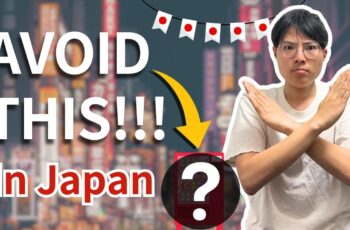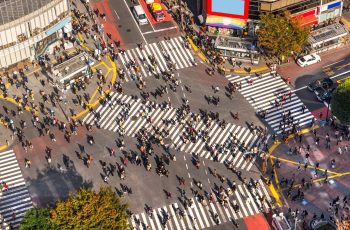Japan. The name itself conjures images of neon-drenched Tokyo streets, serene Kyoto temples, futuristic bullet trains, and unbelievably delicious food. It’s a destination that consistently tops travel bucket lists, and for good reason. But alongside its reputation for beauty and efficiency, Japan carries another, more intimidating one: it’s expensive.
While Japan can certainly be a pricey destination, this reputation is often inflated by first-time visitors who, through a lack of local knowledge, make a series of common and costly mistakes. The truth is, traveling through Japan can be surprisingly affordable—if you know how to navigate it like a local.
With the world of travel fully reopened and 2025 on the horizon, it’s the perfect time to plan your dream trip. But before you do, let’s ensure your hard-earned money is spent on incredible experiences, not on tourist traps and logistical blunders. Even with a favorable exchange rate, small financial leaks can quickly sink your budget.
This guide is your ultimate pre-flight checklist to plug those leaks. By avoiding these 12 critical mistakes, you can save hundreds, if not thousands, of dollars, allowing you to stay longer, eat better, and experience the true depth of this captivating country without constantly worrying about your wallet.
Mistake #1: Blindly Buying the Japan Rail (JR) Pass
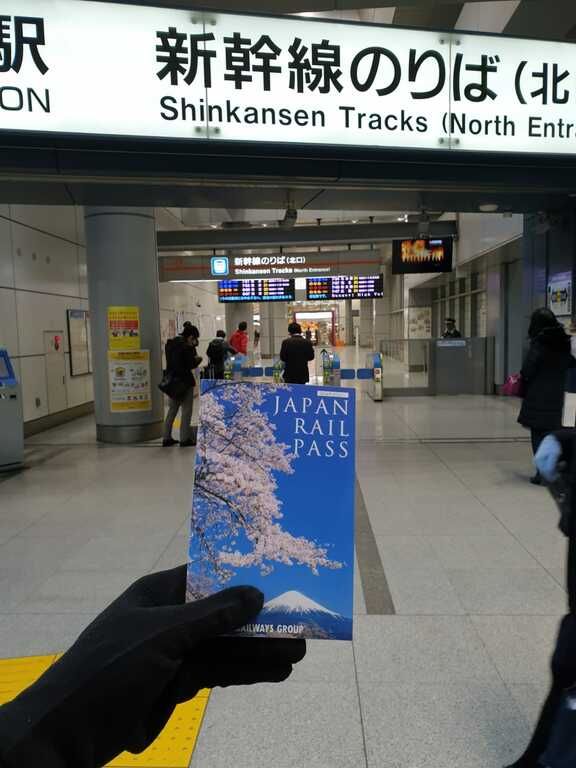
This is, without a doubt, the single biggest and most common financial mistake tourists make. For years, the Japan Rail Pass was a golden ticket, an undeniable bargain for anyone planning to visit more than one city. However, a significant price hike in October 2023 changed the game completely.
The Old Logic: “I’m going to Japan, so I need a JR Pass.”
The 2025 Reality: The JR Pass is now a niche product that is only cost-effective for travelers with very specific, high-speed, long-distance itineraries.
The Financial Impact:
Let’s break it down. A 7-day Ordinary Pass now costs ¥50,000. A standard reserved-seat Shinkansen (bullet train) ticket from Tokyo to Kyoto costs around ¥14,000 one way. A round trip is ¥28,000. To break even on the 7-day pass, you would need to spend an additional ¥22,000 on JR-operated trains within that 7-day window. That’s equivalent to another long-distance trip, like Kyoto to Hiroshima. If your itinerary is just Tokyo -> Kyoto -> Tokyo, buying the pass is like throwing over ¥20,000 away.
The Smarter Solution:
-
Plan Your Itinerary First: Before even thinking about a pass, finalize your major city-to-city travel plans.
-
Use a JR Pass Calculator: Websites like the official Japan Rail Pass Calculator or other third-party tools are essential. Input your exact train journeys, and they will calculate the total cost of individual tickets versus the cost of the pass. This is non-negotiable.
-
Buy Point-to-Point Tickets: For most standard itineraries (e.g., a week in Tokyo and a week in Kansai), it’s now significantly cheaper to buy individual Shinkansen tickets. You can buy these at any major JR station ticket office or vending machine.
-
Consider Regional Passes: If you’re exploring one specific region intensively (e.g., Kansai, Hokkaido, or Kyushu), a regional JR pass might still offer excellent value. These were not affected as drastically by the price hikes. For example, the Kansai Wide Area Pass is brilliant for exploring Osaka, Kobe, Himeji, and even further afield.
-
Look at Budget Airlines: For very long distances, like Tokyo to Sapporo or Tokyo to Fukuoka, budget airlines like Peach or Jetstar Japan can be dramatically cheaper and faster than the Shinkansen.
Pro-Tip: Buying individual tickets gives you access to the fastest Shinkansen services (the Nozomi and Mizuho trains), which are still not fully covered by the standard JR Pass without an additional fee. By skipping the pass, you get more flexibility and access to the best trains.
Mistake #2: Relying on Taxis for City Transport
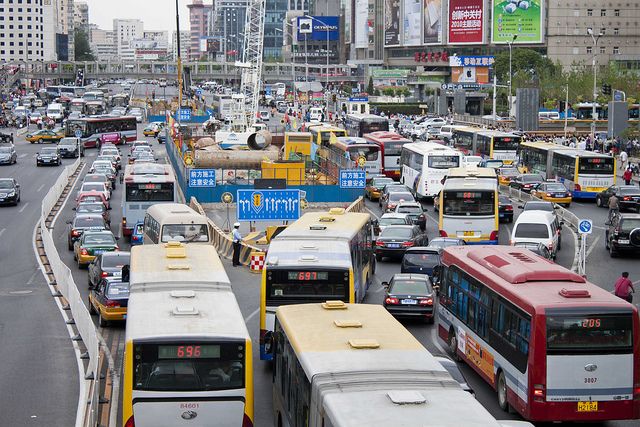
You’ve just arrived, you’re tired, and you see a pristine, automated-door taxi. It seems easy. But taking a taxi for anything other than a genuine “last mile” emergency is financial suicide in Japan.
The Financial Impact:
Japanese taxis are among the most expensive in the world. In Tokyo, the flag-fall fare starts around ¥500 for the first kilometer, then rapidly increases. A short 15-minute ride across a central district like Shinjuku or Shibuya could easily cost ¥2,000-¥3,000 (
15−20 USD). A trip from Narita Airport to central Tokyo? Prepare to pay upwards of ¥25,000-¥30,000 (
170−200 USD).
The Smarter Solution:
Embrace Japan’s public transportation system—it’s the best in the world. It’s clean, punctual to the second, and incredibly comprehensive.
-
For Airports: Use the dedicated airport trains like the Narita Express (N’EX) to Tokyo or the Haruka Express to Kyoto/Osaka. Limousine Buses are also a comfortable and cost-effective option that often drop you directly at major hotels.
-
For Cities: The subway and local JR train lines are your best friends. A single ride typically costs between ¥180 and ¥300. Download Google Maps or the Japan Transit Planner (Jorudan) app, which will give you precise routes, times, and costs.
A taxi is only justifiable in very specific situations: traveling with multiple large suitcases late at night after the trains have stopped, splitting the fare between a group of 3-4 for a very short distance, or if you have mobility issues.
Mistake #3: Buying Individual Paper Tickets for Every Subway Ride
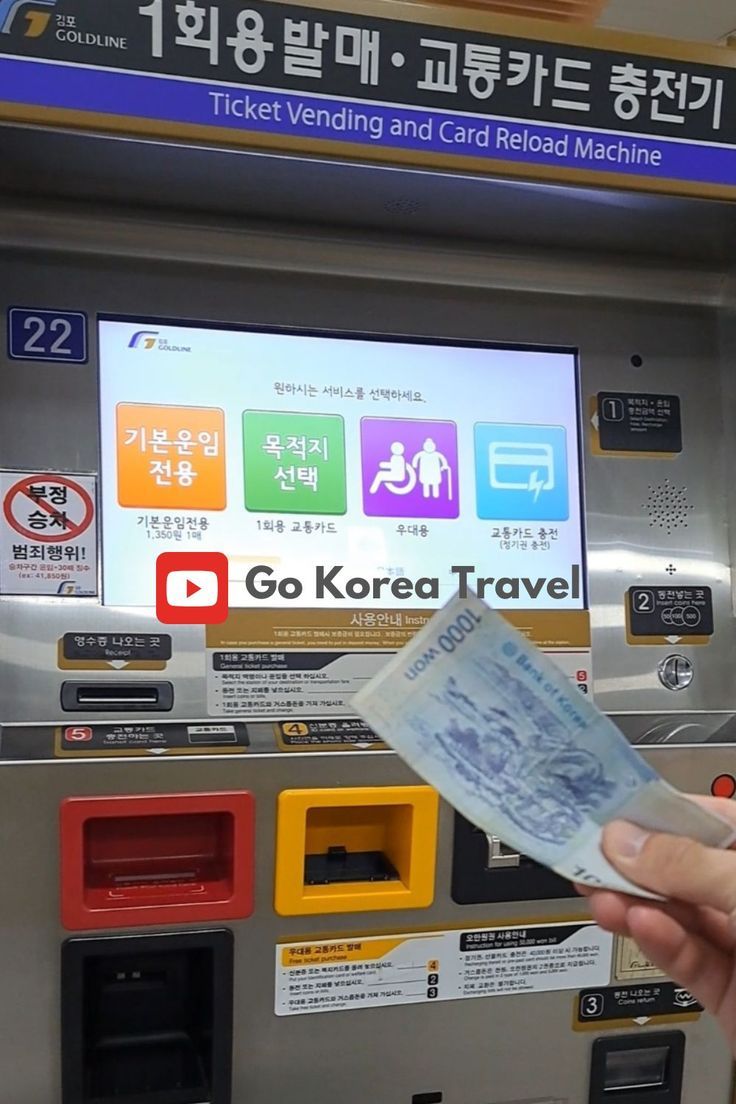
Standing in front of a complex subway map, trying to figure out the exact fare to your destination, fumbling for coins, and printing a tiny paper ticket for every single ride is not only a waste of time but also a waste of small amounts of money that add up.
The Financial Impact:
While the monetary loss is small on a per-trip basis, the real cost is time and convenience. Furthermore, using an IC card often results in fares that are a few yen cheaper than paper tickets, as they are calculated to the exact yen rather than rounded up to the nearest 10.
The Smarter Solution:
Get an IC Card immediately upon arrival. These are rechargeable smart cards that you simply tap on the ticket gate reader as you enter and exit. The system automatically deducts the correct fare.
-
The Main Cards: Suica (primarily in the Tokyo/Kanto region), Pasmo (Tokyo), and Icoca (Kansai region) are the most common. Don’t worry about which one you get; they are now functionally interchangeable and can be used on virtually all trains, subways, and buses across the entire country.
-
Digital IC Cards: If you have an iPhone or a compatible Android phone, you can add a digital Suica or Pasmo card to your Apple Wallet or Google Pay. You can then recharge it instantly with a foreign credit card, completely skipping the need for cash or ticket machines. This is a game-changer for 2025 travel.
-
Bonus Use: IC cards can also be used to pay at most convenience stores, vending machines, and even some restaurants. It’s your all-in-one digital wallet.
Mistake #4: Only Eating in Restaurants in Prime Tourist Areas
You’re standing in front of Senso-ji Temple or Fushimi Inari Shrine, and your stomach rumbles. You duck into the first restaurant you see with an English menu and pictures of ramen. Big mistake. Restaurants in immediate proximity to major tourist attractions often have higher prices, lower quality, and less authentic food. They cater to a transient crowd they’ll never see again.
The Financial Impact:
You might pay ¥1,800 for a bowl of ramen that would cost ¥900 just two streets away. A lunch set could be ¥2,500 instead of a more reasonable ¥1,200. Over a two-week trip, this “tourist tax” can easily add up to hundreds of dollars.
The Smarter Solution:
Adopt the “two-street rule.” Walk at least two blocks away from the main tourist drag before looking for a place to eat.
-
Use Food Apps: Tabelog is the Japanese equivalent of Yelp, but taken far more seriously. While the app is mostly in Japanese, the rating system (anything above a 3.5 is considered very good) is universal. Google Maps reviews are also increasingly reliable.
-
Explore Train Station Complexes & Department Store Basements (Depachika): These are treasure troves of high-quality food. Major train stations like Tokyo Station or Shinjuku Station have vast underground networks of excellent, reasonably priced restaurants. The basement food halls of department stores like Isetan, Takashimaya, or Daimaru offer an incredible array of gourmet bento boxes, sushi, salads, and baked goods that are perfect for a high-end picnic or an easy dinner.
-
Look for Salarymen: If you see a small, no-frills eatery packed with local office workers (salarymen) during lunchtime, go in. It’s a guaranteed sign of good, fast, and affordable food.
Mistake #5: Constantly Buying Drinks from Vending Machines
Japanese vending machines are a marvel of convenience, offering everything from hot coffee in a can to corn soup. It’s tempting to grab a ¥150 bottle of water or tea every time you’re thirsty.
The Financial Impact:
This is a classic “death by a thousand cuts” expense. Four vending machine drinks a day at ¥150 each is ¥600. Over a 14-day trip, that’s ¥8,400 (about $55 USD) spent just on drinks you could have gotten for a fraction of the price.
The Smarter Solution:
-
Bring a Reusable Water Bottle: Tap water in Japan is perfectly safe and clean to drink. Fill up at your hotel before you head out for the day.
-
Buy in Bulk from Supermarkets: Pop into any supermarket (like Life, Aeon, or Maruetsu) or even a large drugstore. You can buy 2-liter bottles of water or green tea for the same price as a 500ml bottle from a vending machine. Keep it in your hotel fridge and refill your small bottle daily.
Mistake #6: Underestimating Convenience Store (Konbini) Food
In many Western countries, “convenience store food” means a sad, stale hot dog or a questionable sandwich. In Japan, it’s the opposite. Konbini like 7-Eleven, FamilyMart, and Lawson offer a stunning variety of high-quality, delicious, and incredibly cheap meals. Ignoring them is a culinary and financial crime.
The Financial Impact:
You can assemble a fantastic and filling meal for under ¥1,000. Compare this to a sit-down restaurant lunch, which will typically start at ¥1,200-¥1,500. Having a few konbini meals allows you to save your budget for a few truly special, high-end dining experiences.
The Smarter Solution:
Embrace the konbini for breakfasts and cheap lunches.
-
Must-Try Items: Onigiri (rice balls with various fillings), high-quality sandwiches (sando), bento boxes, fresh salads, pasta dishes, and their famous fried chicken (FamiChiki from FamilyMart is legendary).
-
Coffee: Their self-serve, bean-to-cup coffee machines offer a surprisingly good cup of coffee for around ¥110. It’s a fraction of the price of a Starbucks.
A konbini breakfast of an onigiri, a yogurt, and a coffee will set you back less than ¥500 and keep you going for hours.
Mistake #7: Not Booking Accommodation Far Enough in Advance
Japan is a country of distinct travel seasons. Cherry blossom season (late March-early April), autumn foliage season (November), and major holidays like Golden Week (late April-early May) see a massive influx of both domestic and international tourists. Waiting to book your hotels is a recipe for disaster.
The Financial Impact:
A business hotel room that costs ¥10,000 per night in the off-season can skyrocket to ¥30,000 or more during peak sakura season. If you wait too long, you’ll be left with either eye-wateringly expensive options or poorly located, low-quality hotels.
The Smarter Solution:
Book 6 to 9 months in advance for peak seasons. For other times of the year, 3 to 4 months is usually sufficient. Use booking sites that offer free cancellation, allowing you to lock in a good price early while still having the flexibility to change your plans if a better deal comes along.
Mistake #8: Exchanging Currency at the Airport
This is a rookie travel mistake, but it’s worth repeating because the allure of convenience is strong after a long flight. Currency exchange counters at airports worldwide, including in Japan, offer the worst possible exchange rates and often charge high fees.
The Financial Impact:
You can lose anywhere from 5-10% of your money’s value compared to better methods. Exchanging $1,000 USD could mean getting ¥10,000 less than you should.
The Smarter Solution:
-
Use a FinTech Card: Cards like Wise (formerly TransferWise) or Revolut are ideal. You can load them with your home currency and spend in Yen at the real mid-market exchange rate, with very low conversion fees.
-
Withdraw from ATMs: Japan is still a cash-heavy society. Instead of exchanging cash, withdraw it from ATMs. The best ones are found in 7-Eleven convenience stores (7-Bank) and at post offices (Japan Post Bank). They have high acceptance rates for foreign cards and offer fair exchange rates (your home bank may still charge a fee, so check with them first).
-
Inform Your Bank: Let your bank and credit card companies know your travel dates to avoid your cards being frozen for suspicious activity.
Mistake #9: Forgetting About Tax-Free Shopping
If you plan on buying electronics, cosmetics, clothes, or other goods, you are entitled to a 10% consumption tax refund. Many tourists either forget this exists or don’t understand the process.
The Financial Impact:
It’s a straight 10% saving. If you buy a ¥100,000 camera, that’s ¥10,000 back in your pocket.
The Smarter Solution:
-
Look for the “Tax-Free” Logo: Most department stores, electronic shops (like Bic Camera or Yodobashi), and even some large drugstores offer this service.
-
Bring Your Passport: You MUST have your physical passport with you at the time of purchase. A photo of it will not work.
-
Meet the Minimum Spend: The purchase must be over ¥5,000 (before tax) at a single store on a single day.
-
The Process: Usually, you pay the full price at the regular cashier and then take your items, receipt, and passport to a dedicated tax-free counter in the store. They will process your refund (usually in cash) and seal your consumable items (like cosmetics or food) in a special bag that you are not supposed to open until you leave Japan.
Mistake #10: Buying Generic, Overpriced Souvenirs
That “I ❤️ TOKYO” t-shirt or mass-produced katana letter opener from a shop in Nakamise-dori (the street leading to Senso-ji Temple) is not only a cliché but also a rip-off.
The Financial Impact:
You’re paying a premium for low-quality, generic items. A magnet might cost ¥800 when a more unique and interesting item could be found for half the price elsewhere.
The Smarter Solution:
Think outside the main tourist gift shop.
-
100-Yen Shops: Stores like Daiso, Seria, and Can Do are a revelation. You can find beautiful ceramics, unique stationery, cute character goods, and clever household items for just ¥110 (including tax). They make for fantastic, quirky, and incredibly cheap souvenirs.
-
Local Supermarkets: Bring home bags of unique KitKat flavors, interesting snacks, curry blocks, or high-quality matcha for a fraction of what you’d pay at the airport.
-
Specialty Shops: Buy a beautiful tenugui (a decorated cotton hand towel) from a specialty store for ¥1,000. It’s a beautiful, useful, and authentic piece of art. Or visit a stationery store like Loft or Tokyu Hands for world-class pens and notebooks.
Mistake #11: Paying for Expensive Views When Amazing Free Ones Exist
The Tokyo Skytree and Shibuya Sky offer breathtaking views, but they also come with hefty price tags (¥2,100-¥3,100 for the Skytree, ¥2,200 for Shibuya Sky).
The Financial Impact:
A family of four could spend over ¥10,000 just to go up one tower.
The Smarter Solution:
Go where the locals go for a great view: for free.
-
Tokyo Metropolitan Government Building (Tocho): Located in Shinjuku, this building has two observation decks on the 45th floor that are completely FREE to the public. The view is spectacular, and on a clear day, you can even see Mount Fuji.
-
Caretta Shiodome: The “Sky View” windows on the 46th and 47th floors offer stunning free views over Tokyo Bay and the Hamarikyu Gardens.
-
Bunkyo Civic Center: This local government office near the Tokyo Dome has a free observation deck on the 25th floor with a unique panoramic view of Shinjuku’s skyscrapers and, on a good day, Mount Fuji.
Mistake #12: Opting for Expensive International Roaming from Your Home Carrier
Using your home mobile plan’s international roaming package is often the easiest option, but almost always the most expensive. Data is essential for navigating with Google Maps, using translation apps, and checking train times.
The Financial Impact:
Roaming packages can cost
10−15 USD per day, quickly adding up to over $150 for a two-week trip for slow, limited data.
The Smarter Solution for 2025:
-
eSIM: This is the best option for modern smartphones (iPhone XS/XR and newer, Google Pixel 3 and newer, etc.). You can buy a data-only plan online from providers like Airalo or Ubigi before you leave home. You install it digitally, and it activates the moment you land in Japan. A 30-day, 20GB plan can cost as little as
25−35 USD. It’s cheap, convenient, and you get to keep your home number for calls and texts.
-
Pocket Wi-Fi: A great option for groups or those with multiple devices. You rent a small, portable modem that provides a Wi-Fi hotspot. You can pick it up at the airport and drop it off before you fly home. Prices are competitive, but it’s another device to carry and keep charged.
-
Physical SIM Card: If you have an older phone without eSIM capability, you can buy a data-only SIM card. You can order one online to be delivered to your hotel or buy one at the airport, though airport prices are higher.
Conclusion: Travel Smart, Not Cheap
Japan is a country that rewards preparation. By sidestepping these 12 common mistakes, you’re not just saving money; you’re fundamentally changing your trip. You’re trading overpriced tourist meals for authentic local discoveries. You’re swapping taxi queues for the zen-like efficiency of the Shinkansen. You’re transforming your trip from a stressful, expensive rush into a deeper, more affordable, and infinitely more rewarding journey.
